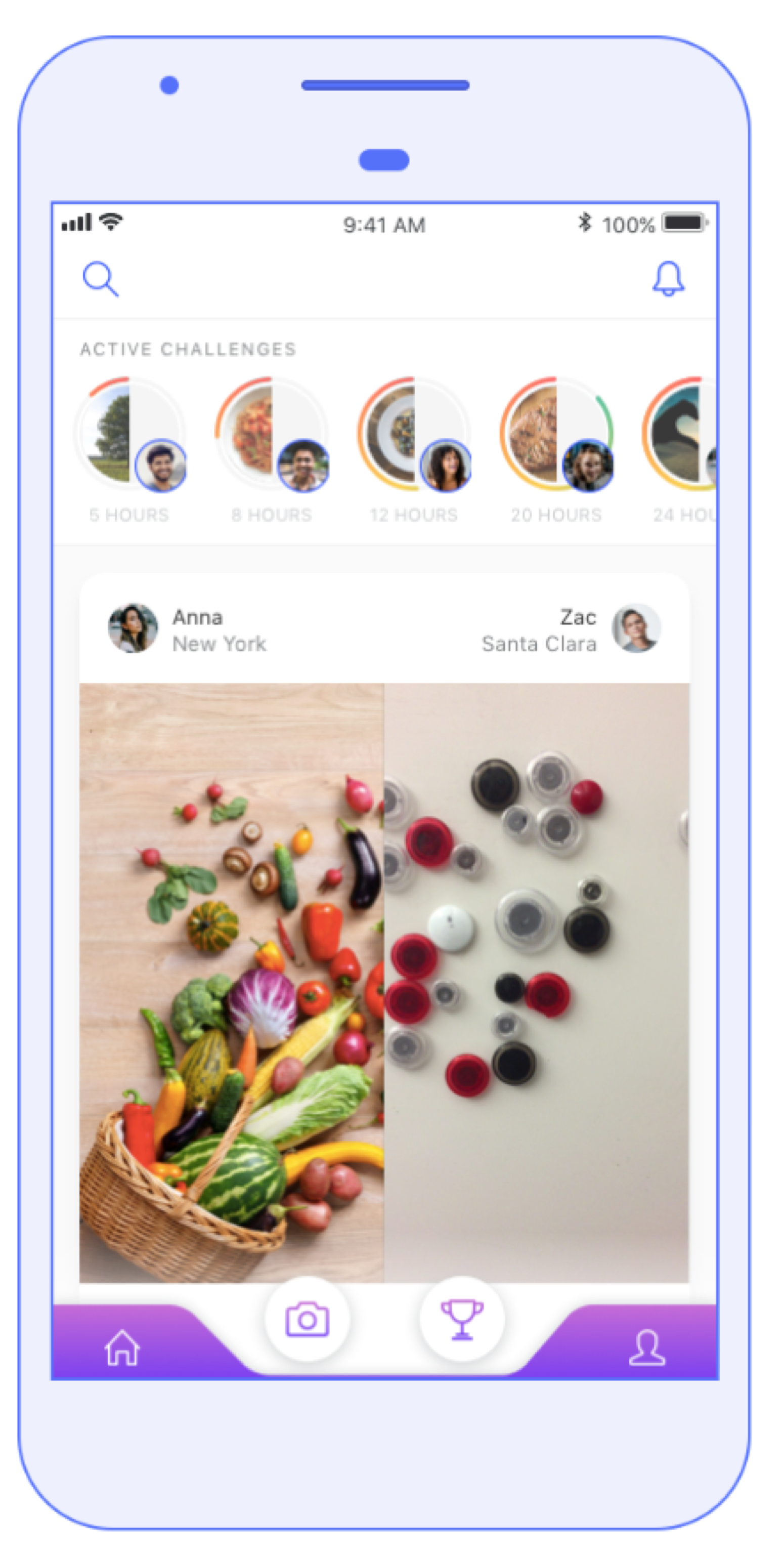Refining PicPong
The name is inspired by the game ping pong, in which players hit a ball back and forth in quick succession.
Version 1
Drawbacks in the first iteration of PicPong
We tested the hi-fidelity prototype of PicPong with 5 participants and as well as clients and following is the feedback we recieved:
- Participant's natural intention became to consume content rather than creating content
- The upfront public contents made people wonder if everything will be public here.
- Lastly, many people said the app reminded them of Instagram


Version 2
Final iteration of PicPong
To address people’s concern, we made some major changes for our final version of PicPong. Following are the changes we made:
- We focused on the creative act itself by nudging people to start making as soon as they open the app.
- We have also helped people build more personal connections by devoting a whole section to one-to-one messages, and people can reach this section easily from the home screen by one click
- Lastly, we built our own visual identity by changing the layout and using a totally different color palette.